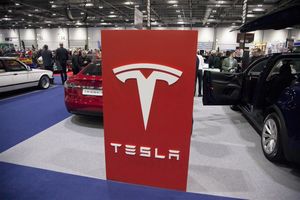
Nvidia's meteoric rise in the stock market, propelled by its indispensable role in the artificial intelligence (AI) revolution, has captured global attention, driving its market capitalization past unprecedented thresholds. However, this exhilarating ascent is increasingly accompanied by a chorus of caution from analysts and investors, who are raising alarms about the sustainability of current AI spending and the looming specter of an "AI bubble." The fervor surrounding generative AI has ignited a massive wave of investment in infrastructure and development, but questions persist regarding the tangible returns on these colossal expenditures, prompting a critical examination of the market's long-term trajectory.
Nvidia's Unstoppable Momentum and the AI Gold Rush
Nvidia's (NVDA: NASDAQ) stock performance has been nothing short of spectacular, becoming a bellwether for the AI era. In 2024, the company's shares surged by an astonishing 171.2% by year-end, with nearly 150% of that growth occurring in the first half alone. This propelled Nvidia to cross the $3 trillion market capitalization mark in June 2024, and by July 2025, it had surpassed $4 trillion, briefly making it the largest listed U.S. company by market capitalization in August 2025. This remarkable growth is fundamentally rooted in Nvidia's dominant position as the leading provider of Graphics Processing Units (GPUs), the specialized chips essential for training and running complex generative AI applications. The company's consistent outperformance, with four consecutive quarters in calendar year 2024 beating analyst expectations in revenue and earnings, has further cemented investor confidence. For the third quarter of fiscal year 2025, Nvidia reported a record revenue of $35.1 billion, a 94% year-over-year increase, with its pivotal data center segment contributing a record $30.8 billion, up 112% year-over-year.
The primary catalyst for Nvidia's unparalleled rebound is the insatiable demand for its AI hardware. Cloud giants and enterprises worldwide are in a race to acquire Nvidia's chips to build and scale their large language models and other AI initiatives. Nvidia has skillfully maintained its competitive edge through aggressive innovation, regularly unveiling new chip architectures like Blackwell in March 2024 and Rubin in June 2024, with a commitment to annual chip releases. Furthermore, strategic investments and partnerships, including a reported $100 billion investment in OpenAI and $5 billion in Intel (INTC: NASDAQ), are designed to bolster the broader AI ecosystem and solidify Nvidia's role as a foundational infrastructure provider. The company's 10-for-1 stock split, effective June 7, 2024, also likely contributed to increased retail investor interest and subsequent valuation increases.
Despite these impressive figures and strategic maneuvers, the market has not been entirely without jitters. Nvidia's stock has experienced occasional pullbacks, including a 5% decline after its Q2 2024 earnings report and a roughly 1.5% decrease year-to-date in 2025, attributed to broader macroeconomic pressures and geopolitical risks, particularly U.S. trade restrictions on advanced semiconductor exports to China, a historically significant market for Nvidia's data center sales.
The AI Spending Conundrum: Bubble or Transformative Boom?
The euphoria surrounding AI has ignited a fierce debate about the sustainability of current investment levels. A growing number of analysts and investors are voicing concerns, drawing parallels to previous market bubbles. A significant worry is the perceived "AI bubble," with critics arguing that the soaring valuations of many AI companies are driven more by speculative excitement and lofty expectations than by proven revenues and robust business models. Even prominent figures like Sam Altman, CEO of OpenAI, have acknowledged that some company valuations appear "insane."
A key concern revolves around the lack of demonstrable return on investment (ROI) from current AI expenditures. An MIT report highlighted that a staggering 95% of companies investing in generative AI have yet to see measurable financial returns, and an equally high percentage of generative AI pilots fail to deliver anticipated ROI. This suggests that many organizations might be "scaling inefficiency," pouring millions into AI without first addressing fundamental business friction points or clearly defined use cases.
The practice of "circular financing" or "vendor financing" has also raised eyebrows. Nvidia's substantial investments in companies like OpenAI and Intel have led some analysts, such as Jay Goldberg of Seaport Research Partners, to question whether these are effectively "circular transactions" where Nvidia invests in companies that then use those funds to purchase Nvidia's products. This dynamic sparks concerns about whether Nvidia is inadvertently propping up demand for its own offerings, reminiscent of practices observed during the late 1990s dot-com bubble.
Nvidia's own valuation, nearing $4.4 trillion, suggests that much of its future growth potential may already be "baked in" to its stock price, potentially limiting significant upside for new investors. Companies like Palantir (PLTR: NYSE) and Nvidia exhibit very high price-to-earnings ratios, which can make investors "panicky" during market corrections. Furthermore, while AI companies are rapidly investing in data centers and infrastructure, there's a perceived lag in developing clear and sustainable revenue models to justify these massive expenditures. Bain & Co. projects an $800 billion revenue shortfall for AI companies by 2030, compared to the $2 trillion needed to fund computing power. OpenAI, for instance, is reportedly losing billions annually, though it anticipates becoming cash-flow positive by 2029.
Market Ripple Effects: Winners, Losers, and the Shifting Landscape
The AI revolution, and the concerns surrounding its spending, are creating distinct winners and losers across the market, while fundamentally reshaping industry dynamics.
Likely Winners:
- Nvidia (NVDA: NASDAQ): Despite the concerns, Nvidia remains a primary beneficiary as long as the demand for AI hardware continues unabated. Its technological leadership and established ecosystem provide a significant moat.
- Hyperscale Cloud Providers: Tech giants like Microsoft (MSFT: NASDAQ), Amazon (AMZN: NASDAQ), Alphabet (GOOGL: NASDAQ) (Google), and Meta Platforms (META: NASDAQ) are investing heavily in AI infrastructure and integrating AI into their cloud services and various products (e.g., Microsoft Copilot, Amazon Web Services with Anthropic, Google's DeepMind and custom TPUs).
- Other Chip Manufacturers: Broadcom (AVGO: NASDAQ) is gaining prominence by providing custom AI chips and networking products for data centers, securing large orders from major hyperscalers and potentially OpenAI. AMD (AMD: NASDAQ) is well-positioned to benefit from the growing AI inference market and the industry's push for open interconnect standards like UALink, which could reduce reliance on Nvidia's proprietary technologies. Taiwan Semiconductor Manufacturing (TSM: NYSE) (TSMC), as the leading foundry for advanced semiconductors, is a crucial enabler for all AI chip designers and will benefit from increased production volumes.
- Data Center Infrastructure & Energy Providers: The colossal energy demands of AI data centers are a boon for utility companies such as NRG Energy (NRG: NYSE), Constellation Energy (CEG: NASDAQ), and Vistra (VST: NYSE), leading to significant investments in new generation capacity. Companies like GE Vernova (GEV: NYSE), supplying high-efficiency gas turbines, also stand to benefit. Vertiv (VRT: NYSE) and Schneider Electric (SU.PA: EPA), providers of advanced liquid cooling and HVAC solutions, are essential for preventing AI data centers from overheating. Data Center Real Estate Investment Trusts (REITs) like Equinix (EQIX: NASDAQ), Digital Realty Trust (DLR: NYSE), and American Tower (AMT: NYSE), which own and operate specialized facilities, are also poised for growth. Furthermore, construction and industrial companies such as Caterpillar (CAT: NYSE), DuPont (DD: NYSE), and Martin Marietta (MLM: NYSE) will supply materials, machinery, and equipment for the extensive build-out of new data centers.
- AI Software and Services Companies with Clear ROI: Businesses that can demonstrate tangible financial returns from AI integration, particularly in areas like back-office automation and boosting employee productivity, are poised for success.
Likely Losers:
- Companies with Unproven AI Strategies: Those investing heavily in generative AI pilots without clear, measurable financial returns face significant risks, given the high failure rate of such initiatives.
- Businesses Failing to Adopt AI Effectively: Companies that do not strategically leverage AI for efficiency, innovation, and competitive advantage risk falling behind their more agile counterparts.
- Legacy Technology Providers: Firms heavily reliant on older technologies or slower to adapt to AI-optimized solutions may struggle to remain competitive. While Intel received an investment from Nvidia, it still faces an uphill battle in the AI chip market.
- AI Startups with Unsustainable Valuations: Companies with high valuations based on future potential rather than current profitability, especially if reliant on "circular financing" models, could face significant challenges if investor sentiment shifts or funding becomes tighter.
Broader Implications: A New Economic Frontier, or a Reckoning?
The AI boom is not merely a technological advancement; it's instigating a fundamental paradigm shift across various industries, extending far beyond the technology sector and carrying profound economic and societal implications.
Corporate AI investment reached a staggering $252.3 billion in 2024, with global venture capital funding exceeding $100 billion. Global AI spending is projected to surge to nearly $1.5 trillion by 2025 and surpass $2 trillion by 2026. The economic advantages of AI are vast, with estimates suggesting it could contribute over $15 trillion to the global economy by 2030. McKinsey research identifies a $4.4 trillion opportunity in added productivity growth across various sectors. This massive investment is transforming industries: healthcare and pharmaceuticals are leveraging AI for drug discovery and diagnostics, retail is optimizing customer experiences and supply chains, and financial services are enhancing fraud prevention and data analysis. The IT sector itself is undergoing significant investments in foundational infrastructure like servers, semiconductors, and software, while sectors like automotive and education are also experiencing significant effects.
However, this transformative potential comes with challenges. The workforce is expected to undergo significant evolution, with AI potentially leading to job displacement in some areas and necessitating extensive reskilling efforts to meet shifting talent needs. While AI could automate 60-70% of worker activities, this doesn't necessarily translate to entire roles being eliminated, but rather a reshaping of responsibilities and skill requirements. The immense power requirements of AI data centers, exemplified by OpenAI's plan to deploy 10 gigawatts of capacity (equivalent to 10 nuclear reactors) with Nvidia, will necessitate massive upgrades to existing electrical grids and substantial investments from utility companies, raising concerns about infrastructure strain and energy sustainability. Furthermore, the AI boom is largely concentrated among a few dominant players, leading to increased interconnectedness and potential consolidation of power within the tech industry, which could raise regulatory and antitrust concerns.
What Comes Next: Navigating the AI Frontier
The immediate future of the AI market will be characterized by a delicate balance between continued innovation and increasing scrutiny of financial viability. In the short term, the demand for high-performance AI chips will likely remain robust, benefiting companies like Nvidia, AMD, and TSMC. However, the market will increasingly look for concrete evidence of ROI from AI investments. Companies that can demonstrate tangible productivity gains, cost efficiencies, or new revenue streams directly attributable to AI will be favored. This will likely lead to a strategic pivot for many organizations, moving beyond experimental pilots to more targeted, value-driven AI implementations.
Long-term possibilities include the continued development of specialized AI hardware, with increased competition from custom AI chips developed by hyperscale cloud providers. The industry will also likely see a greater emphasis on energy-efficient AI solutions and sustainable data center practices as infrastructure and energy constraints become more pronounced. Regulatory bodies may also become more involved, addressing concerns about market concentration, data privacy, and the societal impact of AI. Potential strategic pivots will include a shift towards "full-stack AI" solutions, where companies offer not just hardware but also integrated software and services to simplify AI adoption and maximize value. Market opportunities will emerge for businesses that can provide clear, measurable AI solutions, particularly in niche applications or underserved industries. Challenges will include managing the escalating costs of AI development, navigating evolving regulatory landscapes, and addressing the ethical implications of advanced AI. Potential scenarios range from a continued, albeit more rational, growth in AI investment, to a significant market correction if ROI fails to materialize or if a true "AI bubble" bursts.
Conclusion: A Defining Moment for the AI Economy
Nvidia's recent rebound stands as a powerful testament to the transformative potential of artificial intelligence and the critical role semiconductors play in this new era. The company's unparalleled success underscores the immense demand for the foundational technology driving generative AI. However, the accompanying concerns about the sustainability of current AI spending are not to be dismissed lightly. They represent a crucial inflection point, urging a more disciplined and results-oriented approach to AI investment.
Moving forward, the market will increasingly differentiate between speculative enthusiasm and genuine value creation. Investors should closely watch for companies that demonstrate clear, measurable returns on their AI investments, rather than simply participating in the spending spree. The evolution of AI from a nascent technology to a mature, value-generating force will depend on the industry's ability to address the ROI gap, develop sustainable business models, and navigate the complex interplay of technological advancement, economic realities, and regulatory oversight. The next few months will be critical in determining whether the current AI boom is a sustainable economic revolution or a prelude to a significant market adjustment.
This content is intended for informational purposes only and is not financial advice


















